Land Precision Strike is a new requirement from the British Army for a ground-launched precision-guided weapon that can be used at long range, 80 km plus.
In response to a written Parliamentary Question on HIMARS, the Minister of State for Defence (Alec Shelbrooke) answered;
Due to the decision to recapitalise the M270 fleet and increase their numbers in line with Integrated Review 2021 outcomes, there are no plans to procure High Mobility Artillery Rocket Systems (HIMARS). The recapitalised M270 MLRS platform will fire: Guided Multiple Launch Rocket System (GMLRS); Extended Range GMLRS (ERG); the Precision Strike Missile (PrSM); and the Land Precision Strike (LPS) missile.
The late 2022 DSTL magazine, The Science Inside, also described their work on the Deep Fires Rocket System.
Deep Fires Rocket Systems: A single platform with multiple effectors, capable of independent precision targeting of threats out to 150km. Dstl is working with industry to develop a missile to engage high value, time sensitive moving targets (Land Precision Strike) and a dispensing rocket payload that provides target acquisition, kinetic and non-kinetic effect against multiple dispersed targets (long range area effect).
Further details on the Land Precision Strike missile were provided in a separate document sent to the Defence Select Committee;
The Land Precision Strike (LPS) Project is developing momentum fast; it will be fired from the upgraded MLRS to leverage investment in that platform, achieve efficiencies, and deliver the vision of ‘One Launcher, Many Payloads’. This will be a transformational capability from 2028 to counter mobile, fleeting, armoured, and high value threats out to at least 80km.
Key points to take from this (limited) information are
- Ability to be fired from the M270 tracked MLRS vehicle
- Suitable for mobile, fleeting, armoured, and high-value targets
- Minimum 80km range
- Target in-service date of 2028
Providing the backdrop to the Land Precision Strike missile is upgrade work on the existing systems.
The In-Service Guided/Multiple Launch Rocket System (G/MLRS) upgrade programmes will consist of…
- Upgrades to 44 M270B1 launch vehicles, including a new armoured cab, composite rubber tracks, and upgraded automotive and launch mechanism components,
- A new Fire Control System will be developed collaboratively with the US, UK, Italy, and Finland,
- An ability to fire the Guided MLRS Extended Range (GMLRS-ER), providing a 150 km capability,
- An ability to fire the Precision Strike Missile (PrSM), providing a 499 km capability.
This is a 5-year programme.
There has not been a great deal of information forthcoming on MoD contracts for GMLS-ER, let alone PrSM, they both remain aspirational at this point, although ER-GMLRS is much more likely.
Why Land Precision Strike?
GMLRS and ER-GMLRS are no doubt extremely effective munitions, with the former well proven in multiple conflicts. The IM-compliant M31A1 GMLRS rocket is 3.94m long, 227 mm in diameter and weighs 302 kg. Of that 302 kg, 90 kg is the single blast fragmentation warhead.
This single warhead is excellent against buildings or other fixed infrastructure, and clusters of vehicles, but its area effects are limited. The Alternative Warhead provides these area effects by using 160,000 preformed tungsten fragments. A version using larger tungsten balls is also under development for the US Army.
Even though GMLRS has been called the 70 km sniper, it is a blunt weapon.
GMLRS cannot be used against moving targets because it only has a GPS/INS guidance system, and in some scenarios, the minimum range of 15 km might also be a problem.
GMLRS cannot be easily fired from naval vessels (although it has been demonstrated) and is limited against reverse slope targets.
The large warhead might also be limiting in many situations.
Perhaps an easy way to understand the requirement is to visualise an 80 km Brimstone.
Land Precision Strike (and GMLRS/ER-GMLRS) are fundamental components of the British Army’s new Deep Reconnaissance Strike Brigade Combat Team.
Future Soldier describes DRS as;
1st Deep Recce Strike BCT will focus on the Army’s deep fight, combining deep fires with reconnaissance and the ability to integrate non-lethal effects. Deep Recce Strike BCT combines the Ajax’s formidable sensors with enhanced fires systems to provide long-range persistent surveillance for the coordination of deep fires.
It is fair to say that DRS is still a work in progress, but the building blocks are beginning to form, and the Land Precision Strike missile will be a fundamental part of its development.
Land Precision Strike option 1 — Expand the Capability of ER-GMLRS
The Extended Range GMLRS has some space in the nose cone, reserved for future capability. The US Army Lines of Development for Precision Fire Rockets and Missile Systems (PFRMS) include one called ‘Operate Across Multiple Domains’, which is generally thought to include developing an anti-shipping capability.
The large unitary warhead remains in this development.
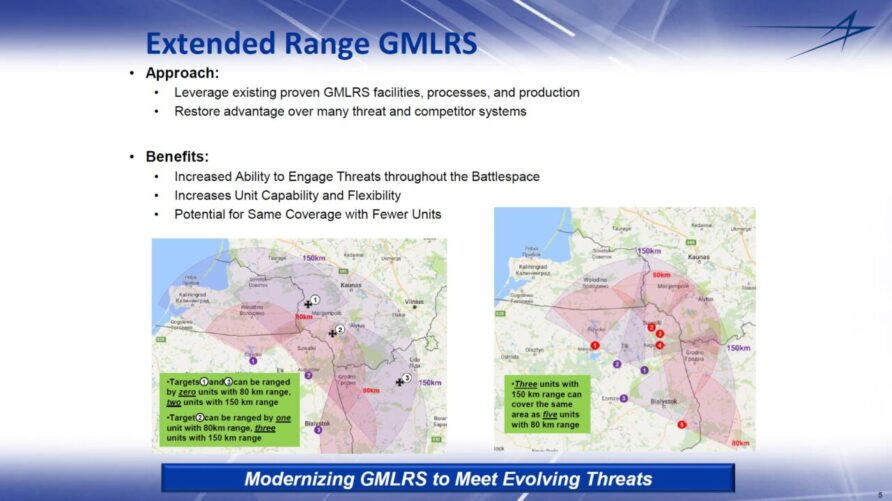
A ship is not a tank, so the question is, would a spiral development of ER-GMLRS meet the objectives of Land Precision Strike
The ER-GMLRS is a large rocket, 300 kg at launch, so manoeuvrability against fast-moving targets might be challenging in the terminal phase, even if it used the space in the nose cone for some form of alternative guidance system.
I don’t think this is a realistic option for Land Precision Strike, but included for completeness.
Land Precision Strike option 2 — Sensor Fuzed Submunitions
G-SMArt might not be a bad option for Land Precision Strike.
Manufactured by Gesellschaft für Intelligente Wirksysteme (GIWS), a joint venture between Rheinmetall and Diehl, G-SMArt is a development of the mature SMArt 155 mm sensor fuzed submunition. The MoD actually awarded an integration contract to GIWS many years ago as part of the AS90 Braveheart programme.
SMArt 155 packaged two sensor-fuzed submunitions into a single 155 mm shell.
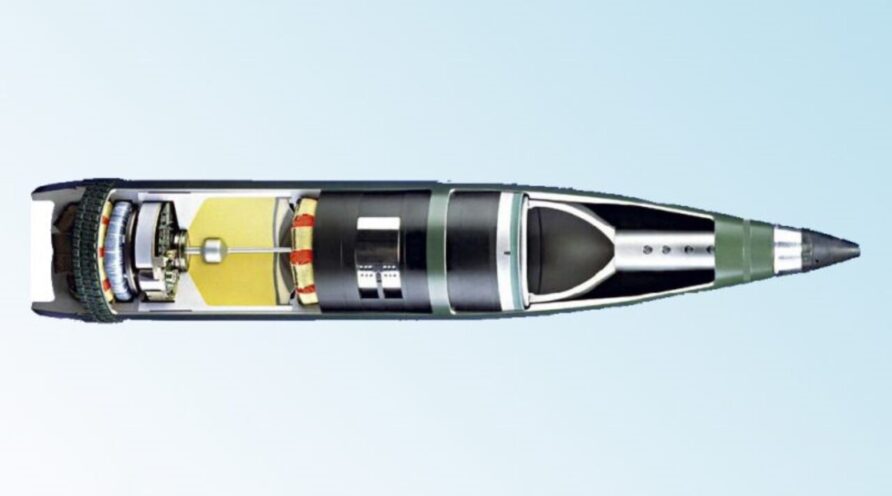
Rheinmetall describe SMArt as;
Standing for Sensor-fused Munition for Artillery, Calibre 155mm, SMArt 155 is a robust, highly effective “fire and forget” artillery shell. Each round carries a payload consisting of two autonomous, intelligent, high-performance submunitions. These are capable of neutralizing stationary and moving armoured vehicles of all types, including main battle tanks, in any environment and in all weathers. SMArt 155 makes it possible to halt an armoured assault with minimum ammunition expenditure and pinpoint accuracy, even at long ranges of engagement. The risk of collateral damage is reduced to a minimum.
The projectile features a thin-walled carrier shell, providing maximum volume for the two submunitions. Combining a multi-mode sensor system with an explosively formed projectile, or EFP, the submunitions are extremely effective. Excellent target detection and false target rejection capabilities, a large footprint, a high hit probability and outstanding warhead performance combine to assure maximum lethality and havoc on the ground, effectively neutralizing enemy armour formations.
The video below provides a good overview
Diehl has proposed the same mature DM702 sensor fuzed munition, but in a four-round package for the M30 GMLRS rocket.
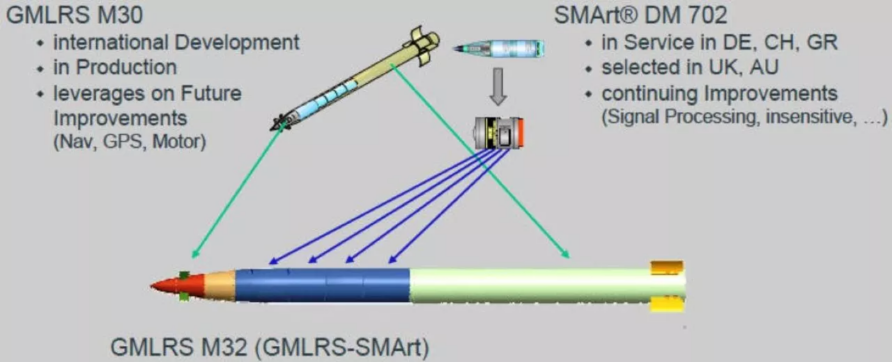
Only a few changes to the munition are required for GMLRS integration. Using G-SMArt would also provide some measure of commonality with 155 mm artillery if it were used with whatever replaces AS90.
Although I don’t think anyone has specifically proposed the Nexter/BAE BONUS 155 mm sensor fuzed submunition as an M30 payload, but they are broadly comparable to SMArt.
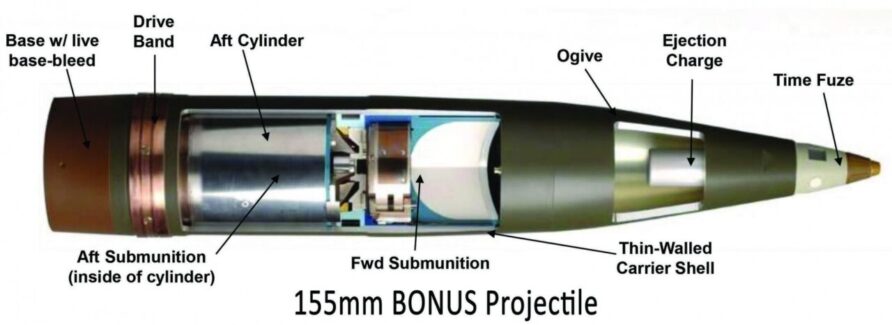
Without knowing the specifics of the LPS requirement set (especially retargeting in flight and terminal guidance), it is not possible to make any determination of suitability, but I think it is quite an interesting and relatively low-risk solution. The commonality benefits between 155 mm and rocket systems would also be compelling.
Land Precision Strike Option 3 — Rocket Boosted Payload
The Boeing Small Diameter Bomb is a precision glide bomb, Saab partnered with Boeing to develop the Ground Launched SDB.
GLSDB builds upon the proven and successful Small Diameter Bomb Increment (SDB I) and Multiple Launch Rocket System rockets. SDB is a 250-pound class weapon with an Advanced Anti-Jam GPS System-aided Inertial Navigation System, combined with a multipurpose, penetrating blast-and-fragmentation warhead and programmable electronic fuze.
The key feature of the 150 km GL-SDB over GMLRS is the ability to attack hardened targets on the reverse slope.
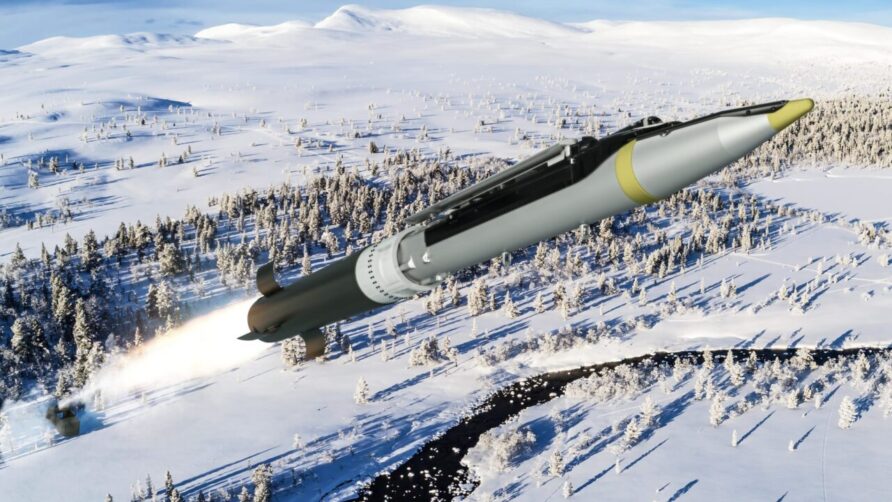
Saab has also shown a containerised fixed launcher for GL-SDB, emphasising both compatibility with existing launchers, but also the independence
Since the system does not need a ballistic path toward the target it is possible to launch the GLSDB from a container, and engage targets 360 degrees without moving the launcher. Besides this, any launcher capable of using the MLRS Launch pod container, may also be used (M270, HIMARS, CHUNMOO).
Video below
If SAAB and Boeing can collaborate on GL-SDB, why not SAAB and MBDA?
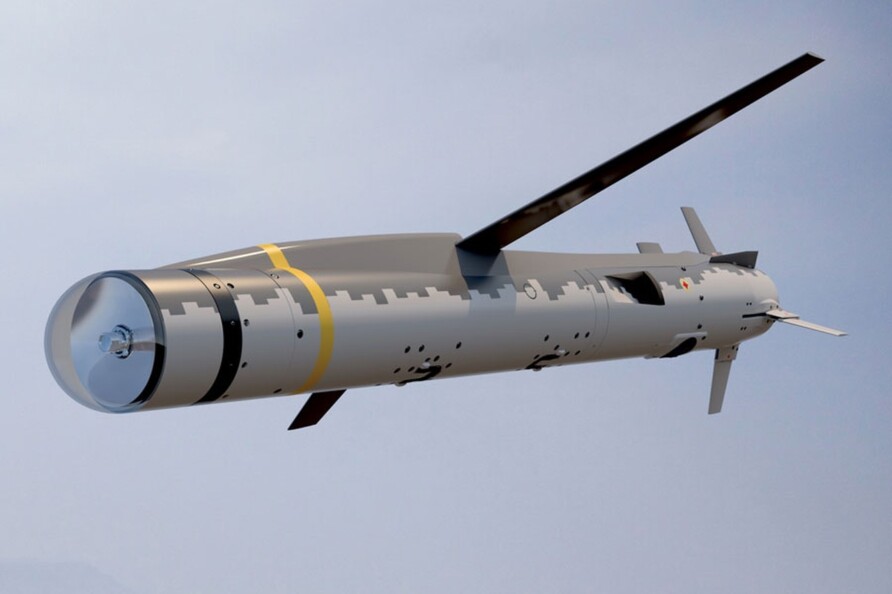
Perhaps naive, as it would undercut the next two products from MBDA, but SDB and SPEAR are of similar weight and dimensions. In effect, Ground Launched SPEAR would simply be a boosted SPEAR, like Ground Launched SDB is simply a boosted SDB. If GL-SDB has an effective range of 150 km, it is likely that GL-SPEAR would considerably improve on that, likely exceeding 200 km.
SPEAR — Glide is another consideration.
In addition to attaching a SPEAR to the front of an M30 rocket, MBDA released a graphic a few years ago showing a concept for a Common Anti-Surface Modular Missile (CAsMM) that used the same launch cell as the Common Anti-Air Modular Missile (CAMM).
I also wonder if some land use could be made with SPEAR EW?
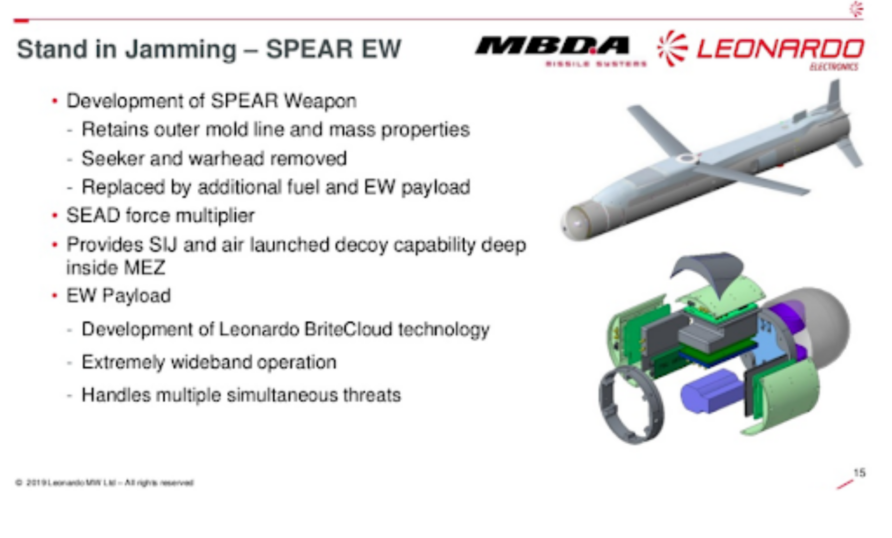
Ground-launched SPEAR remains an interesting option for Land Precision Strike, whether in the VLS configuration or boosted with a GMLRS rocket, after all, the UK taxpayer has invested over half a billion pounds in SPEAR development.
Land Precision Strike Option 3 — Dispensing Rocket Payload
DSTL is working on a technology demonstration programme for a dispensing rocket payload.
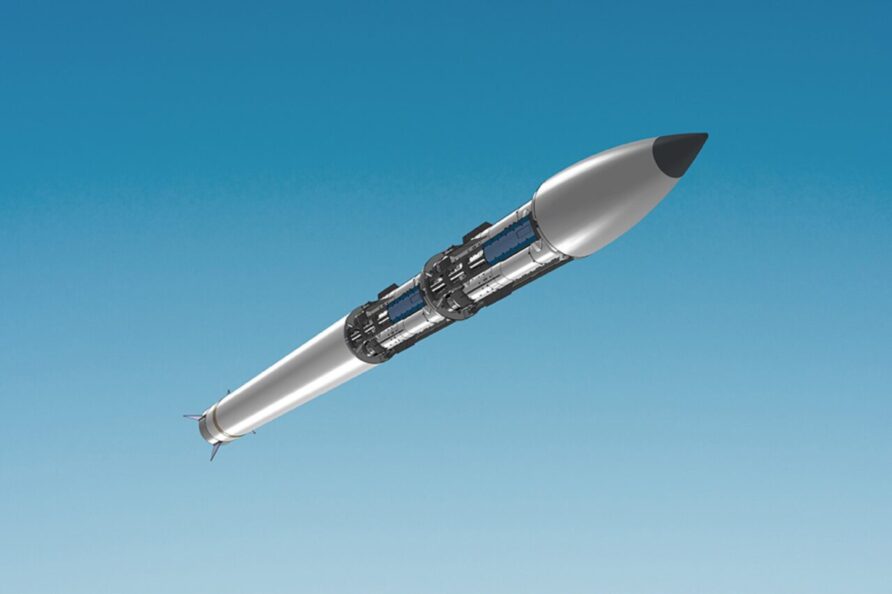
The Lockheed Martin Outrider has been around for a few years and was designed for submarine, helicopter, and vehicle launch using the Submerged Signal Ejector diameter (100 mm) as the constraining dimension.
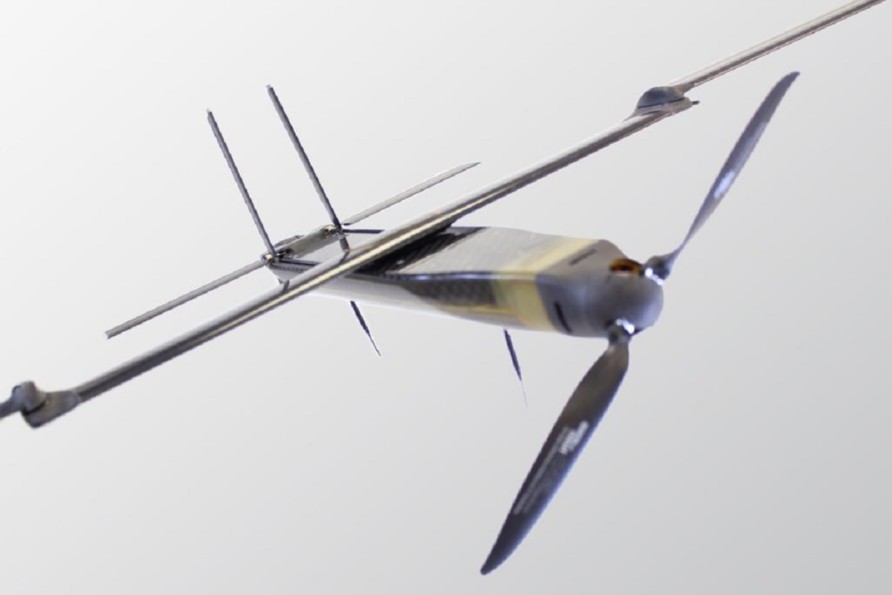
It has a couple of hours of endurance and a range of up to 20 km. It is also ITAR free, and totally home-grown in the UK. Outrider only carries a sensor payload, nothing explosive.
Outrider is a brilliant concept, and the fact that it is the UK developed is even better.
Lockheed Martin UK is still developing the concept, using Outrider as the base air vehicle for a rocket deployed system, the Dispensing Rocket Payload Demonstrator.
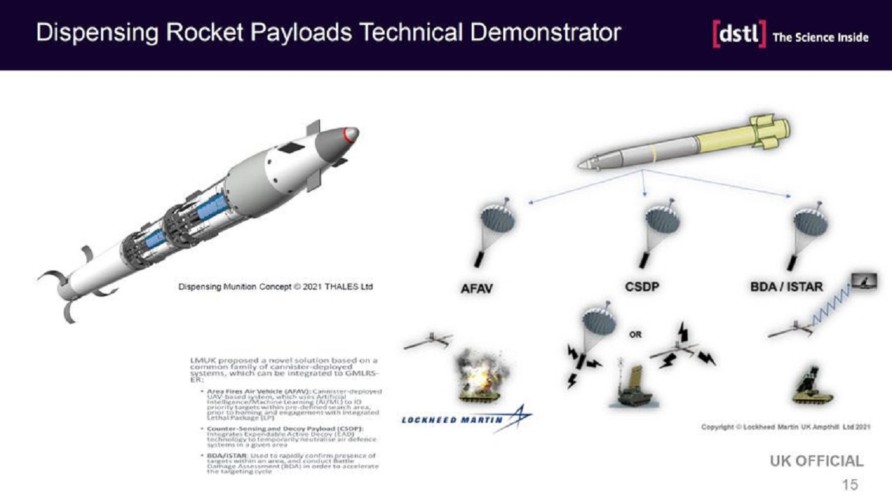
There are three variants, an armed version, an electronic decoy, and finally, a plain old ISTAR version.
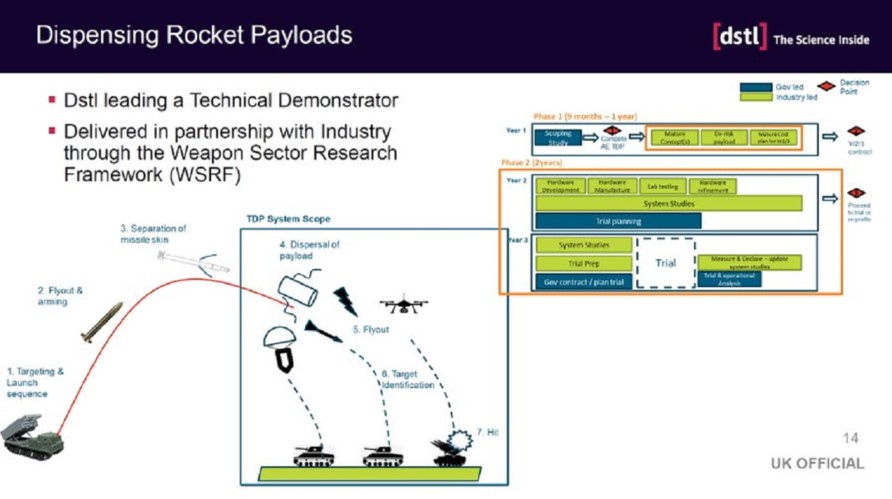
Although the warhead size and responsiveness of an Outrider (or similar) based munition might not meet the Land Precision Strike requirements, I have included it here as an option.
Read more here
It could also be used alongside LPS, locating targets at range. The dispensing rocket would be launched in advance of the LPS, using the UAS or UAS-EW to locate targets, luring high-value targets like AA missile systems to reveal themselves for example. The LPS would say thank-you, and launch immediately after target identification.
The power of this combination is self-evident (although packing an 80 km range data link might be a challenge?)
Land Precision Strike Option 4 — MBDA Land Precision Strike
The systems described above are of interest to Land Precision Strike and included for information, but arguably more closely aligned is the MBDA Land Precision Strike concept, the clue being in the name!
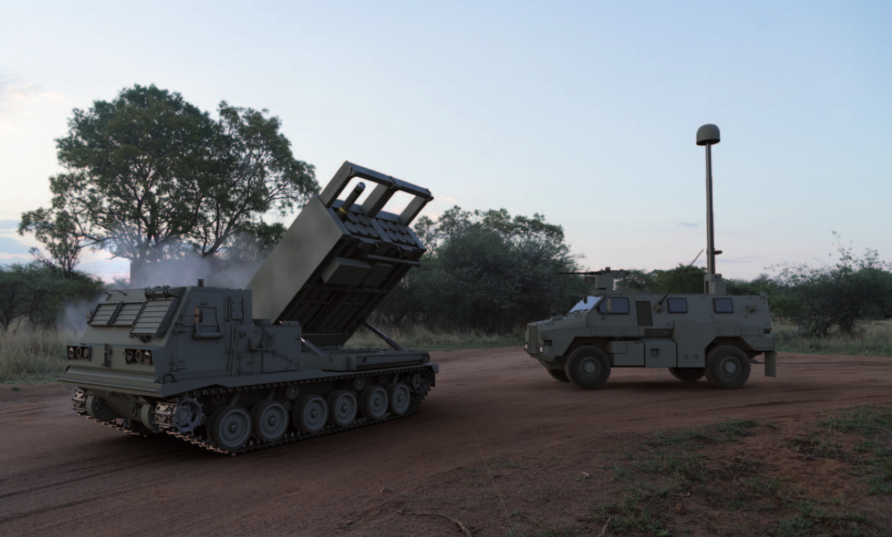
Although details are fairly sparse at this stage, MBDA describe Land Precision Strike as;
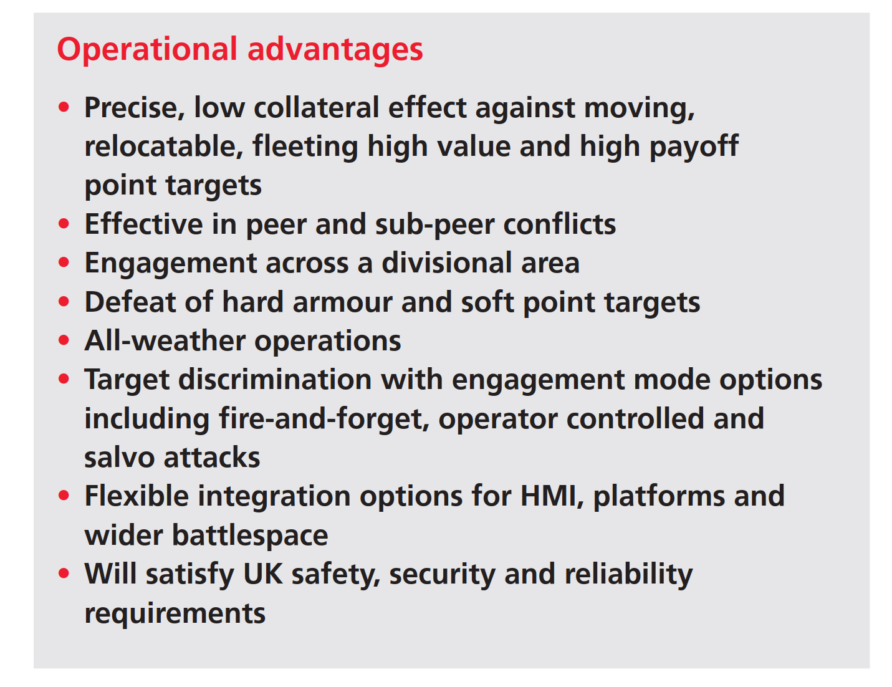
MBDA showed three different concept illustrations.
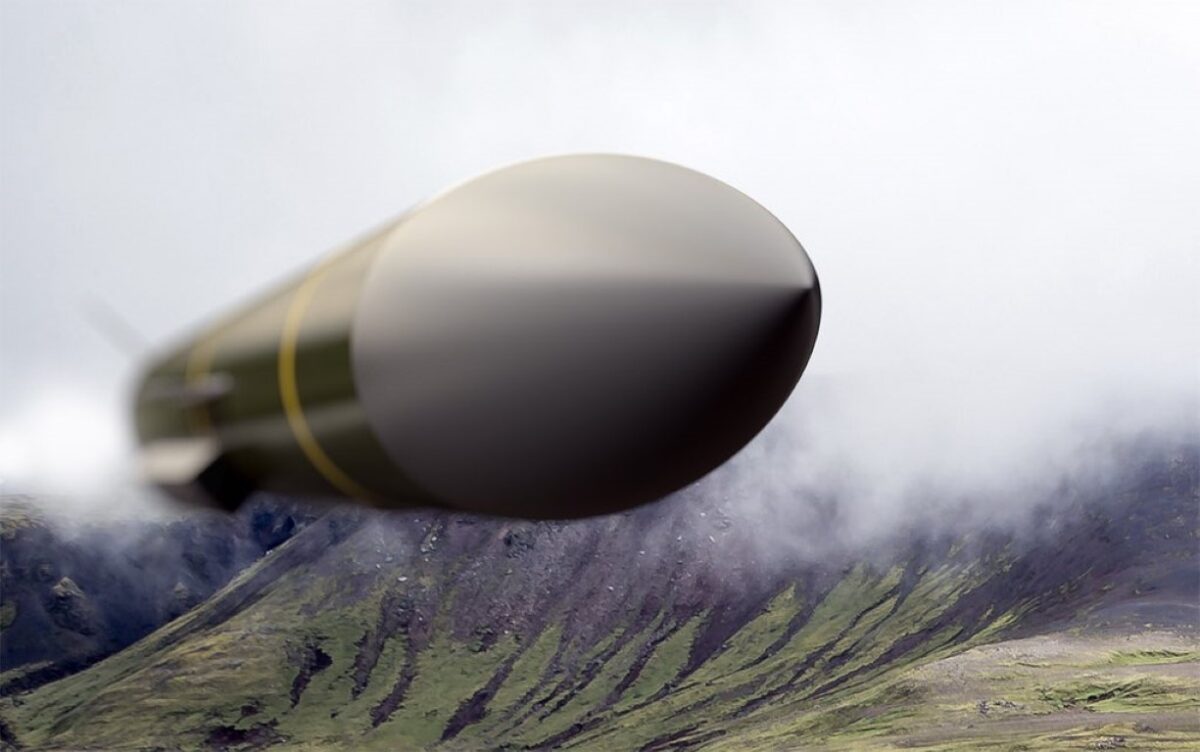
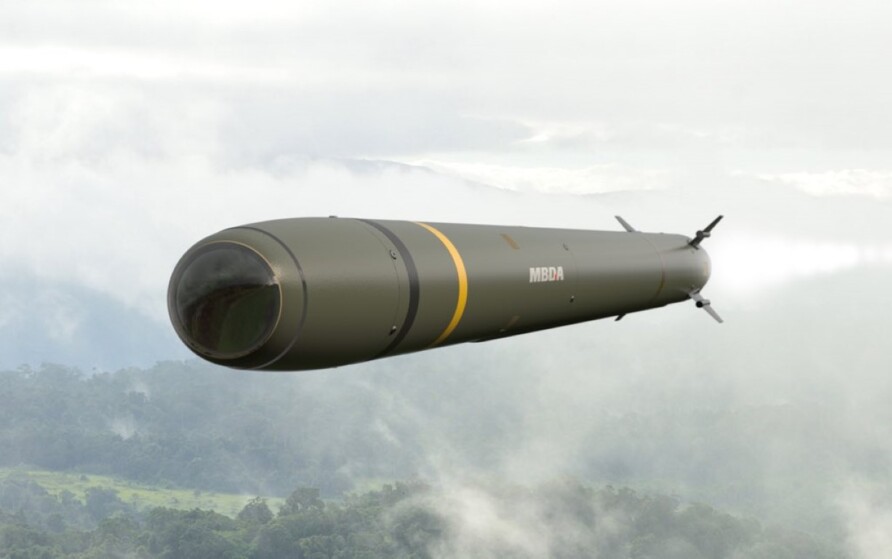
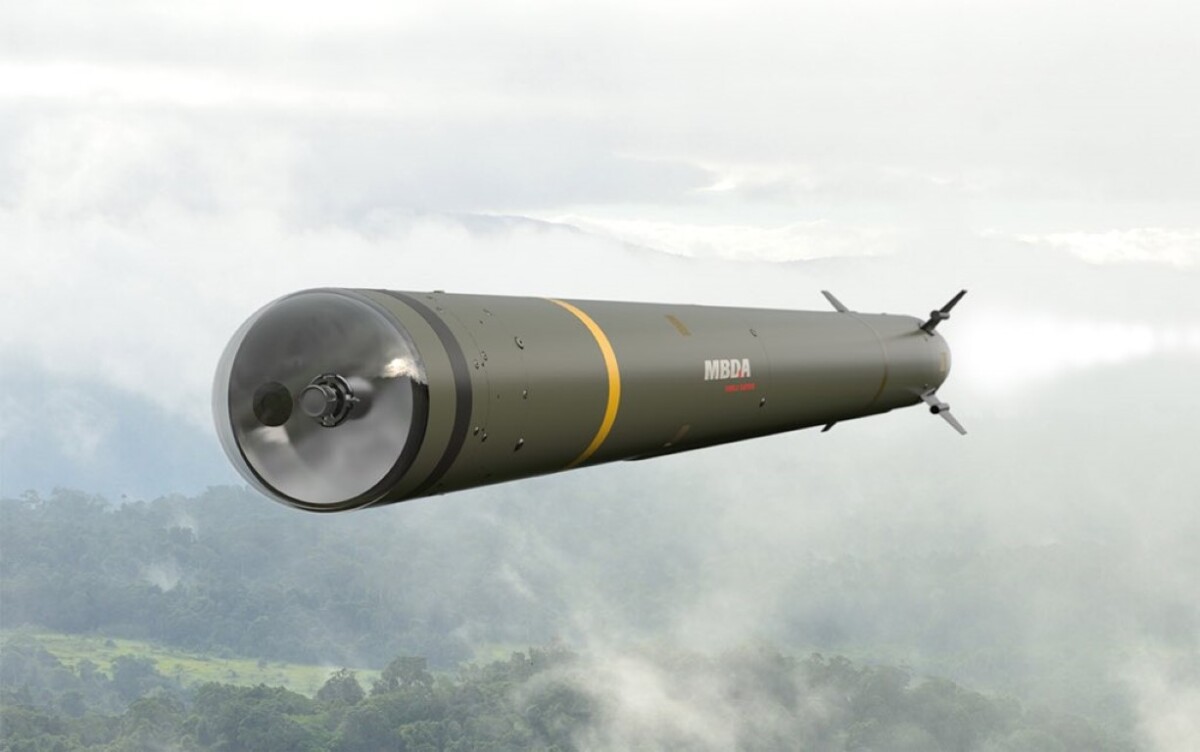
It was subsequently reported that the emerging designs were a single missile of 178 mm in diameter, the same as Brimstone.
In addition to a 6 missile Launch Pod Container (LPC) that would be compatible with the M270 launch vehicle (or HIMARS), MBDA also showed their Land Precision Strike missile in a 2×2 missile configuration that could be carried in multiples on either a MAN truck or Boxer.
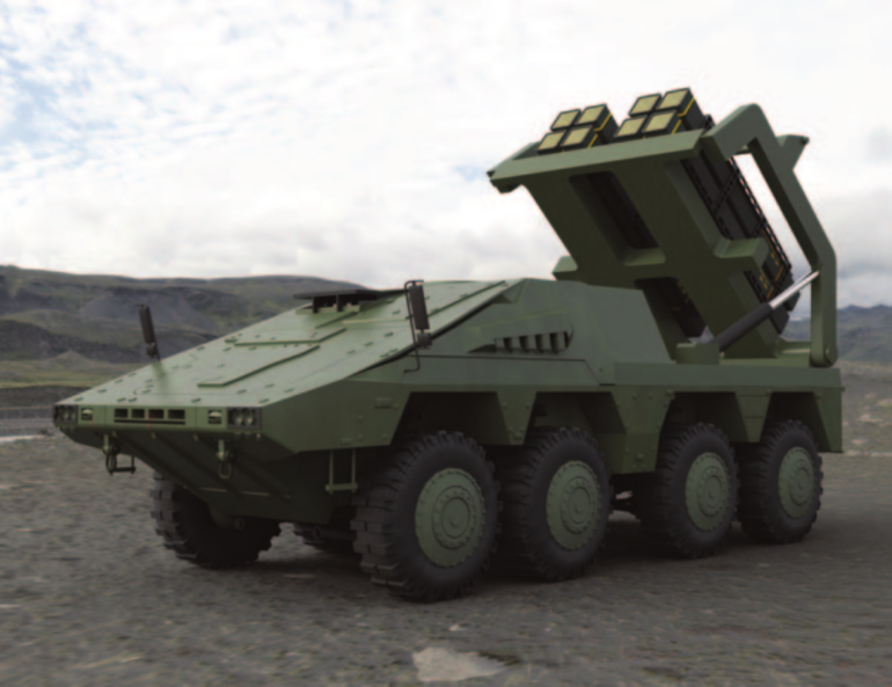
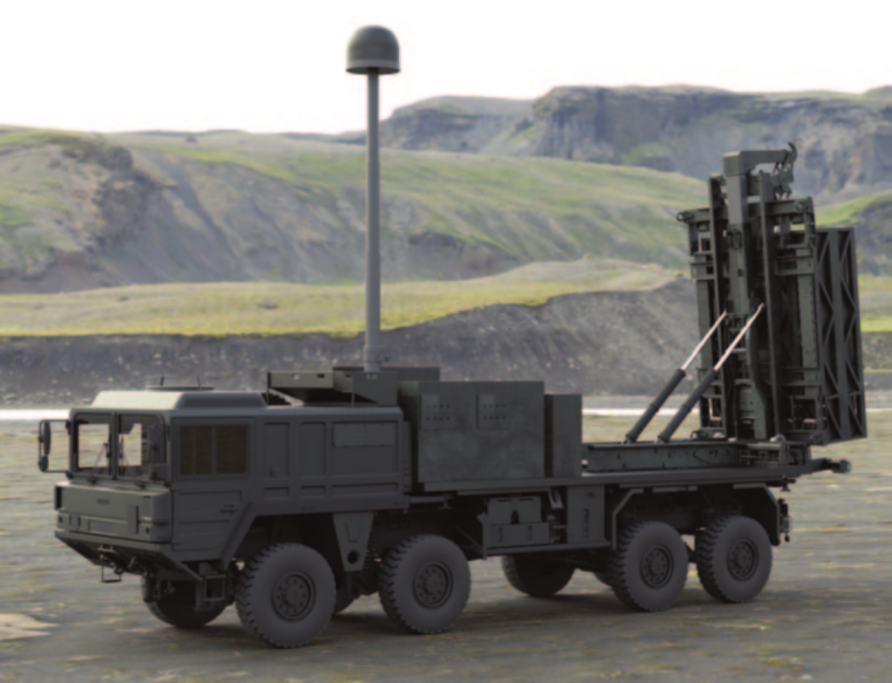
Keen-eyed readers will note the similarities between the truck launcher and CAMM/Sky Sabre
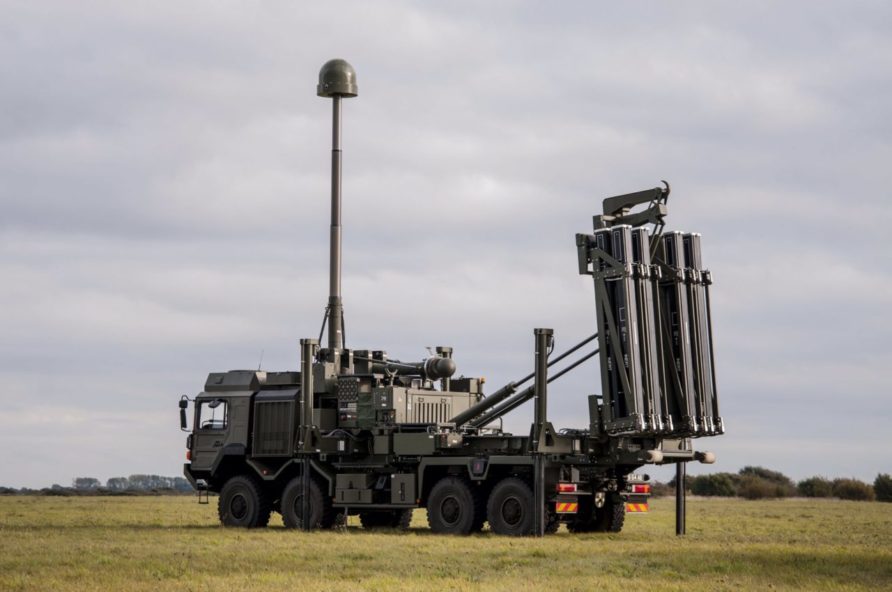
The launcher vehicle system for CAMM has been specifically designed to accept larger-diameter missiles, cunning!
The MoD has access to an excellent complex weapons parts bin, a parts bin the UK taxpayer has funded development of. It makes sense to exploit this parts bin for Land Precision Strike.
In particular, the energetics, sensors, and software from Brimstone 3, Sea Venom, CAMM, and SPEAR could all be re-used.
One element that might need development is the propulsion. Land Precision Strike has a larger body than CAMM, but even CAMM-ER only has a range of ~45 km, and that is longer than the 4.04m length of the Launch Pod Container (LPC) used on the M270 MLRS vehicle.
The extreme manoeuvrability and high supersonic speeds of CAMM/CAMM-ER might not be needed for Land Precision Strike, which indicates a possibility of a newly designed slower burning rocket motor, and one that is of a larger diameter than Brimstone, could be used to achieve the 80 km range requirement. It is still a challenge, though, given the 80 km GMLRS has a diameter of 227 mm.
It is also not clear if Land Precision Strike will employ the same type of launch ejection and tip-over mechanism that CAMM uses, or it will simply be fired at an incline like GMLRS or Brimstone.
LPS could use radio-frequency (RF)/semi-active laser (SAL) or electro-optic/infrared (EO/IR) seeker options, exploiting subcomponents developed for SPEAR, Sea Venom, Brimstone 3 and CAMM.
Given the maturity of the Link 16 Tactical Data Link, and its use across multiple systems, it seems likely Land Precision Strike would also include the feature.
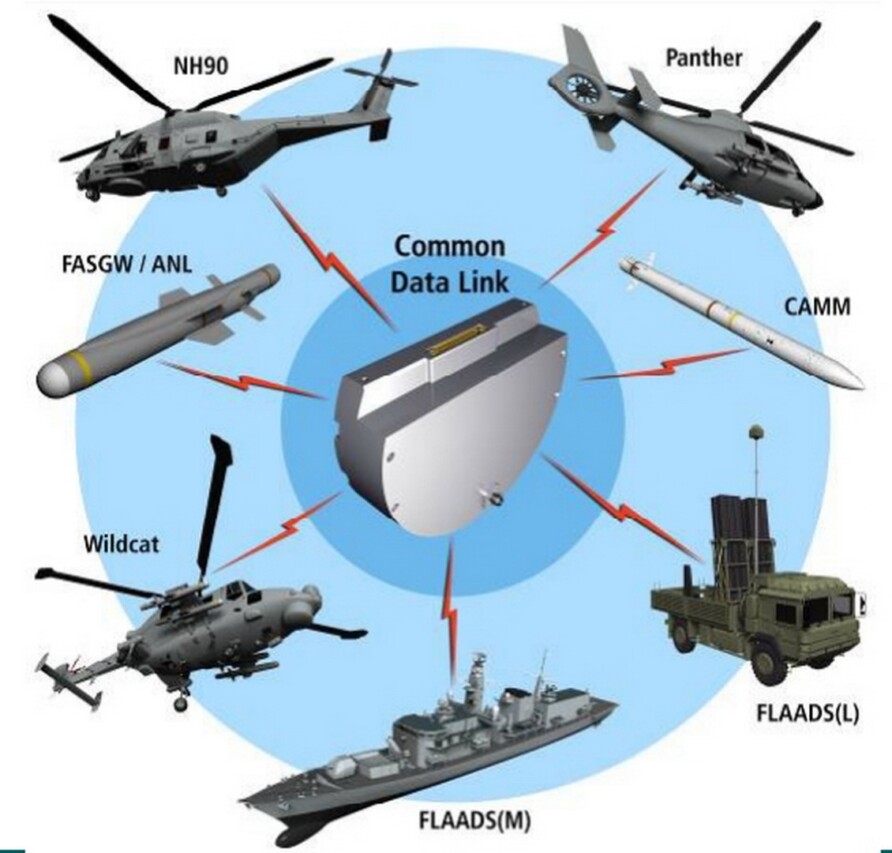
The MBDA Universal Miniaturized Missile Data Link (UMMD), for example, provides
- Man-In-The-Loop (MITL)
- Mission abort
- Eyes on target
- Transmission of surveillance information (en-route recce)
There is much yet to be revealed with the MBDA Land Precision Strike design, but the building blocks are there.
Thoughts on the Land Precision Strike Options…
Don’t Confuse Land Precision Strike with longer-range systems
With all the marketing materials and coverage, it is easy to confuse Land Precision Strike (LPS) with longer-range strategic systems like Precision Strike Missile (PrSM) or the Joint Fire Support Missile. Both are two sides of the same coin, although their manufacturers would argue the differences. PrSM is a long-range ballistic missile with a well-defined growth path, likely to replace ATACMS. JSF-M is a ground-launched cruise missile that has evolved from work completed on Taurus and for the French/German Future Combat Air System.
There are other options for the UK, not least partnering with the Republic of Korea or Turkey.
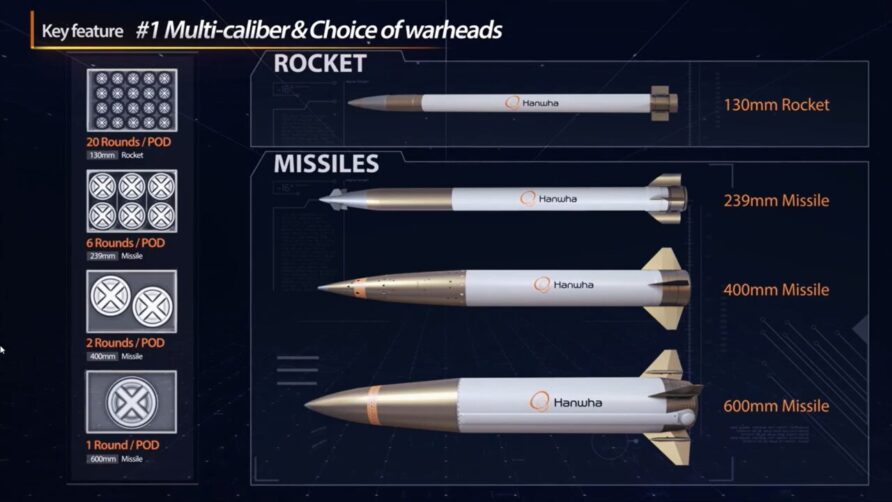
But given we have already signalled intent and signed some initial information-sharing agreements with Lockheed Martin, PrSM would seem odds on.
Odds on, but only if we decide to invest.
A 500 km ground-launched weapon would be a new capability for the British Army, sitting outside the Complex Weapons partnering arrangements and in conflict to some degree with the significant investments we are making to replace the air-launched Storm Shadow.
If we did decide we needed a long-range ground-launched precision weapon, it would seem more prudent and aligned with defence industrial strategy to ensure FC/ASW has a ground-launched option.
I don’t see much chance of the British Army obtaining such a weapon in the face of RAF objections and financial realities, but who knows?
[I will write a separate post on these longer-range strategic missiles in the future]
Don’t Confuse Land Precision Strike with shorter-range systems
The Mounted Close Combat Overwatch (MCCO) requirements look very much like a longer range and non-line-of-sight replacement for Swingfire (long out of service) and, potentially, Exactor (Spike NLOS).
Mounted Close Combat Overwatch (MCCO): a long-range system providing anti-armour coverage to the battle group, with concepts carrying multiple missiles weighing up to 50 kg with a range of up to 10 km or more
MBDA and Lockheed Martin have both shown variations of vehicle launcher configurations for Brimstone and JAGM mounted on Boxers or trucks.
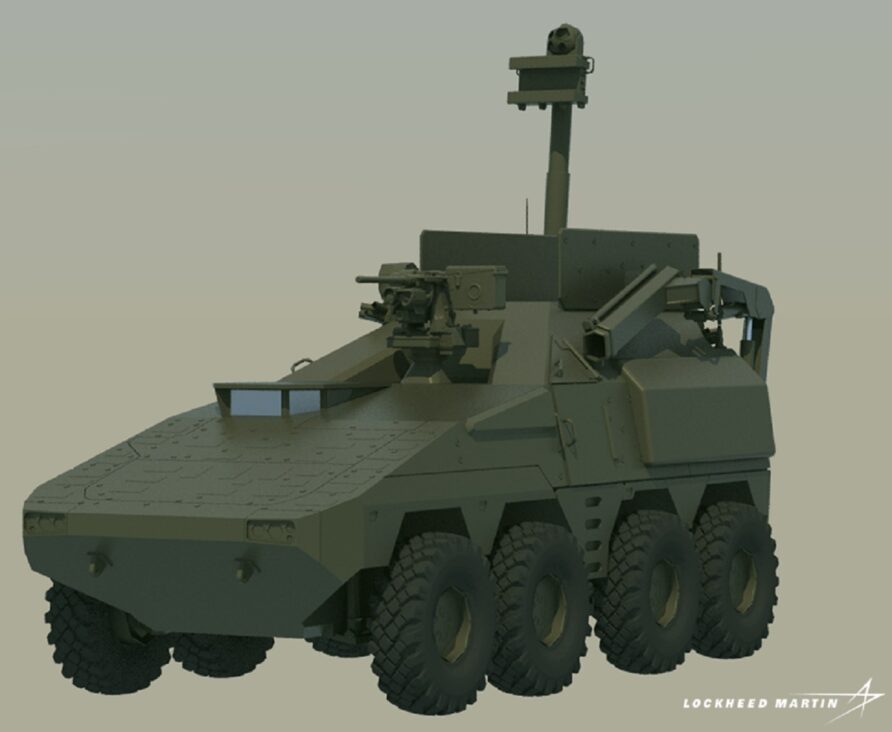
Exactor has a 25 km-30 km range, ground-launched Brimstone, depending on whom you speak to, between 8 km and 15 km
Land Precision Strike has a range requirement of at least 80 km.
[I will write a separate post on MCCO in the future]
Dispensing Rocket Payloads
Extending the utility of the M30 rocket with dispensing payloads does, at face value, seem like an excellent way of driving value into the existing and new investments.
You could easily make a good argument for G-SMArt/BONUS and even a rocket-boosted SPEAR/SPEAR-EW, and I have a suspicion both of these options would not be hugely expensive.
I say this because G-SMArt is an existing-proven weapon that is designed for the demanding physical launch dynamics of 155 mm artillery, and Saab and Boeing developed Ground Launched SDB with their funds; we all know defence primes rarely do this if costs are huge, they just don’t.
The much less well-known DSTL and Lockheed Martin study that will demonstrate the Outrider UAS also appears to have a great deal of promise, read more about Outrider and other tube-launched UAS here
However intriguing, it seems unlikely any of these will meet the Land Precision Strike requirement.
One Two Launcher(s) Many Payloads
Putting aside any notion of a vehicle-based Mk41 VLS for a moment, the British Army actually has in service two launcher platforms;
Option Number 1
The 6-round Launch Pod Container (LPC) as used for GMLRS/ATACMS/PrSM (and the Reduced Range Rocket used for training in the image below)
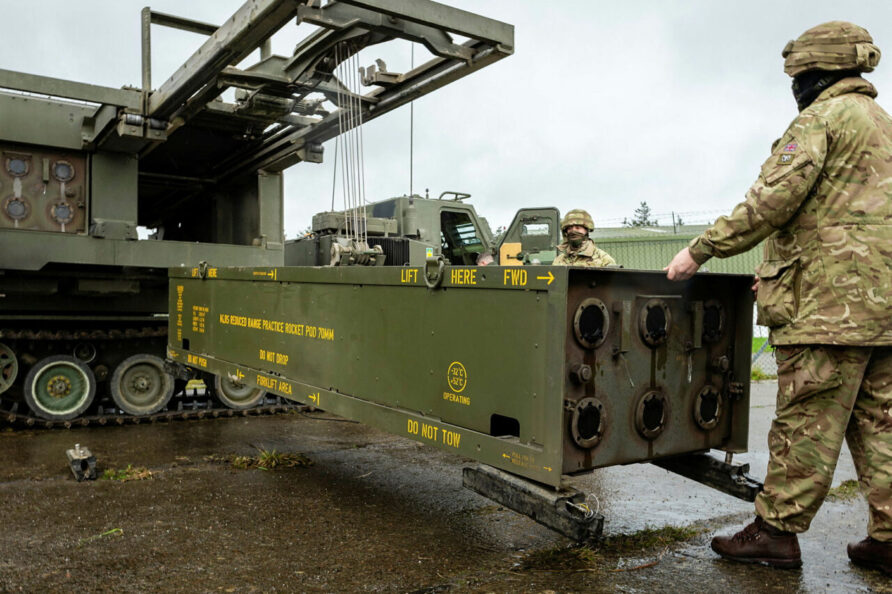
This can be fired from the tracked M270 vehicle (two pods per vehicle) or the wheeled HIMARS vehicle (1 pod per vehicle). There are also a handful of other vehicles that might be used.
This allows a user to maintain common munitions stocks that can be used by heavy-tracked forces, or lighter-wheeled forces, excellent.
The UK doesn’t have a wheeled version (stand fast you Supacat LIMAWS(R) folks) and has no plans to bring one into service either, however good it would be. We have chosen the tracked option (with rubber tracks).
Using the LPC provides the UK with many choices, primarily if we pursue developments like the payload dispenser.
[I will be writing a post in the future about wheeled options]
Option Number 2
The second option is the individual missile pods we use for CAMM (and CAMM-ER)
We have already invested considerable sums in developing this…
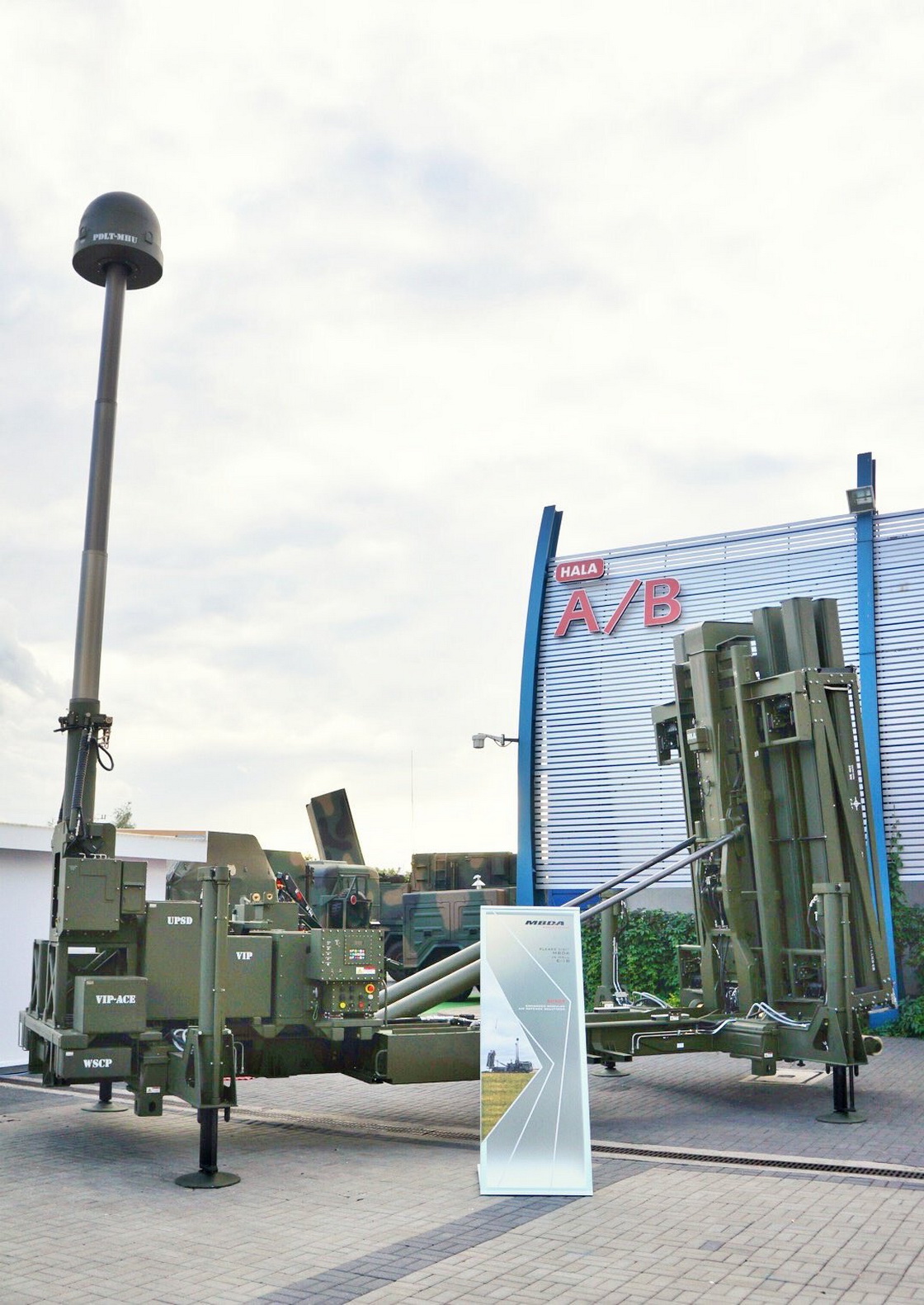
And this can also accept the MBDA Land Precision Strike missile concept.
We could also put them onto the tracked M270 vehicles and even Boxer.
It is easy to envisage a lead force element being flown in on an A400M with the Missile Launcher Vehicle (Land Ceptor) and a selection of CAMM and LPS, able to be fired from the same launcher.
Launch Platform Diversity
Although there aren’t any specific requirements, once you have developed an 80 km Brimstone a number of platform diversity options spring to mind.
- Ultralight weight
- Maritime
- Helicopter
I am not entirely sure a single, ultralight weight, version makes much sense, but if you cast your mind back to the 60 km fibre optic guided Polyphem missile from the mid-nineties, it had an ultralight weight version
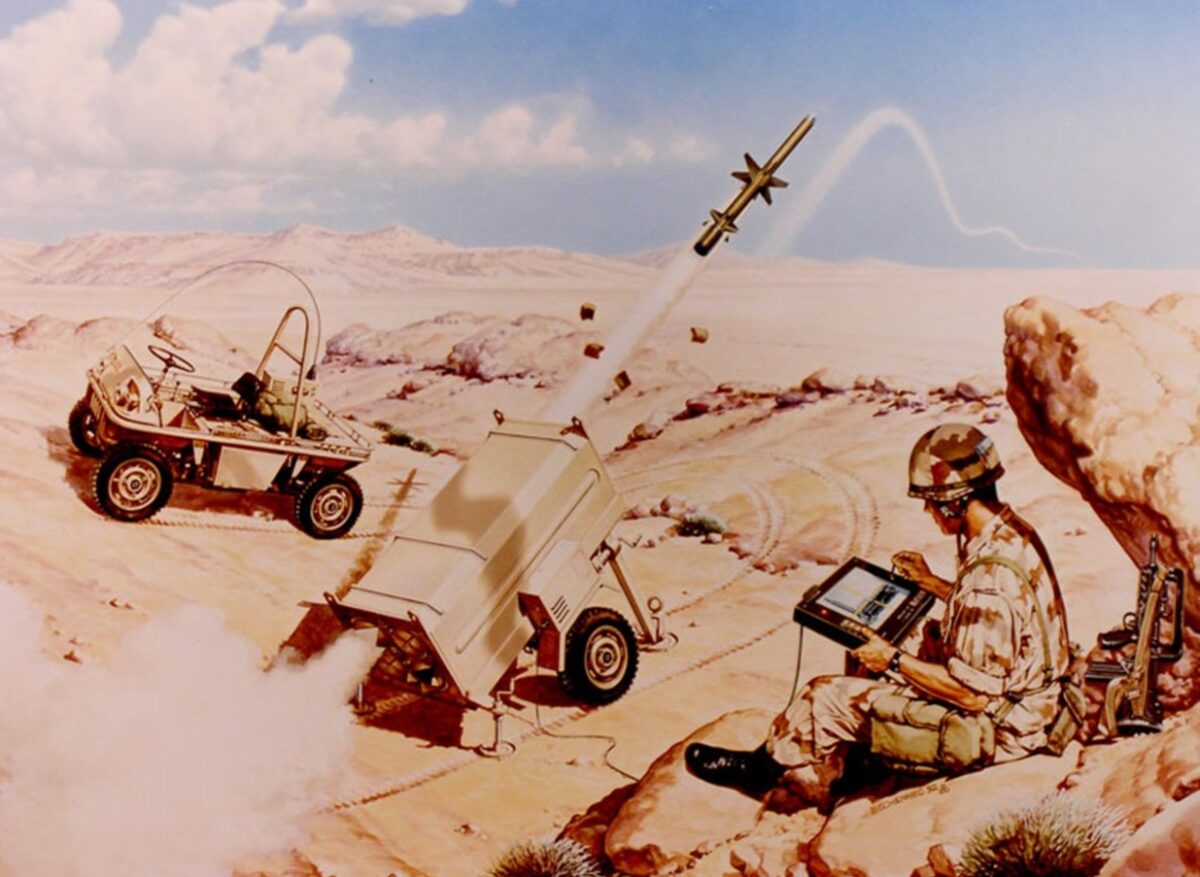
Obviously, any trailer would need to accommodate a potentially 4m long missile, but for niche roles, why not?
With a lightweight launcher and 3 or 4 rounds, the possibility of using a Chinook to move an 80 km radius precision guided weapon into position in an ‘artillery raid’
There are several maritime possibilities for Land Precision Strike.
An 80 km+ precision weapon with a wide target set, able to be fired from the CAMM VLS ‘mushroom farm’
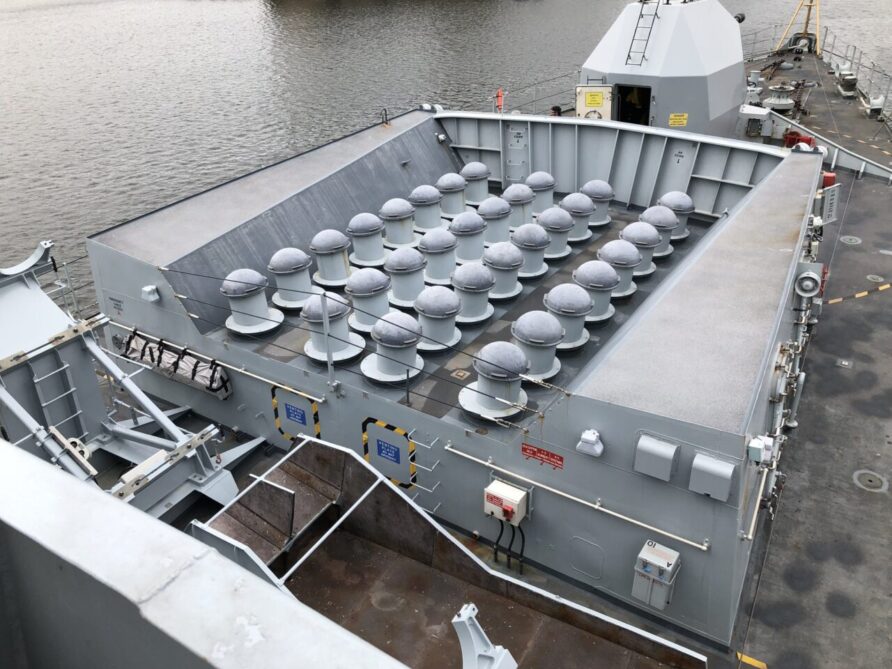
Shut up and take my money, as the saying goes.
I don’t know if the slightly larger Land Precision Strike missile could use the same VLS arrangements as found on Type 23, Type 26 and Type 31, but it holds out several interesting possibilities if so.
The Future Commando Force (FCF) should be all over Land Precision Strike, it could provide them with over-the-horizon support, alongside the 127 mm guns on Type 26 Frigates and whatever can be delivered by embarked aviation.
Apache or Wildcat, with a 4m long, 80 km range precisions guided missile. Will just leave you with that thought!
Final Thoughts on Land Precision Strike
Frankly, it is fantastic news that the Royal Artillery is planning to obtain ER-GMLRS (although hard details have yet to emerge) and if there was nothing else beyond that because of other spending priorities, it would still be fantastic news.
We all know the British Army has several capability holes, refreshing the launchers and signing on for ER-GMLRS is still a significant boost to capabilities, and not one many in NATO have.
The desire to hit moving and armoured targets at GMLRS range is fundamentally the Land Precision Strike requirement, with Deep Recce Strike providing some aspects of the FIND requirement.
Being critical, we should ask how LPS overlaps and complements Apache AH-64E and the RAF’s strike aircraft and complex weapons, especially as these three are a significant cost to the MoD. Why do we need Land Precision Strike when we have the costly Army Air Corps and Royal Air Force, might seem like an unfair question, but we should ask it anyway.
Land Precision Strike is not an off-the-shelf weapon, although the components are all mostly there. The UK taxpayer has invested considerable sums in over the last decade or more.
We have a set of very capable energetics, software and seekers, exploiting these, driving re-use into the complex weapon partnering arrangements should be at the forefront of Land Precision Strike.
I do think there is an excellent argument for Land Precision Strike, and an even stronger argument if it could be integrated with naval vessels, all using a common Tactical Data Link.
I don’t manage the budgets, though.
Discover more from Think Defence
Subscribe to get the latest posts sent to your email.

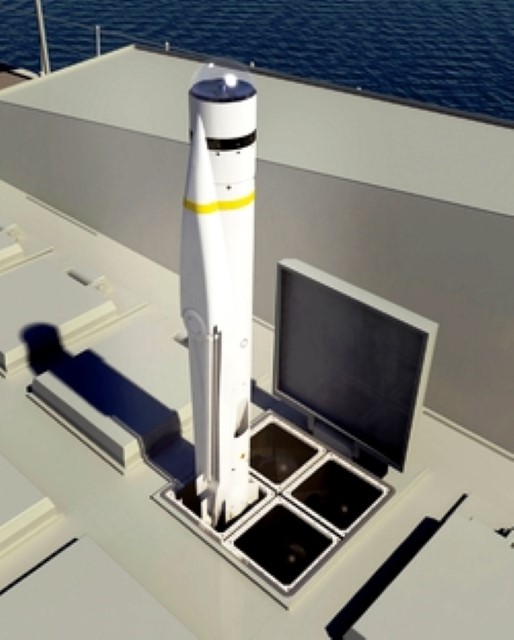
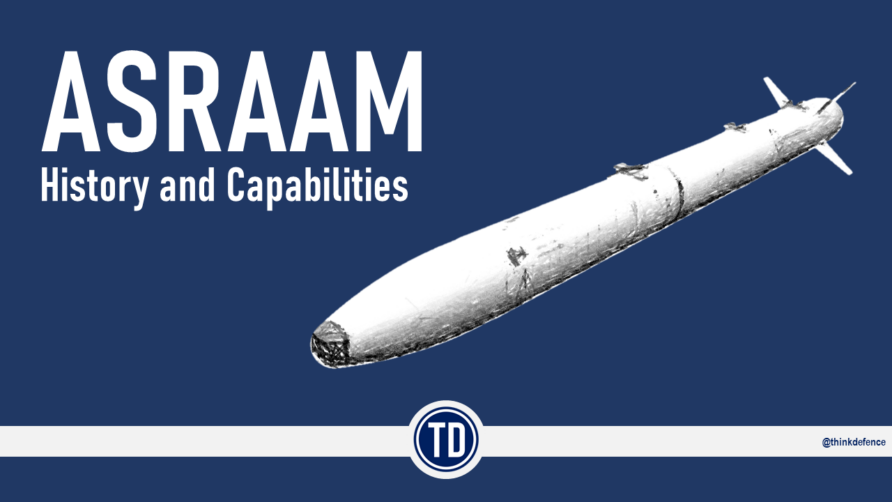
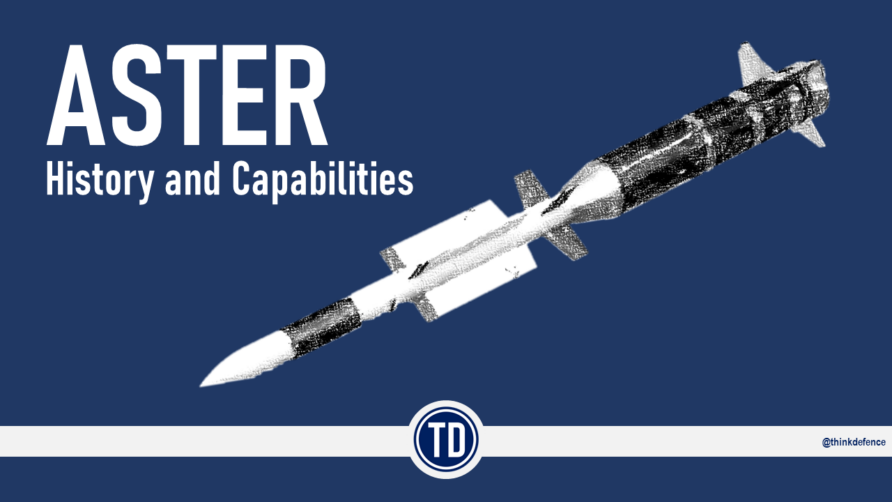
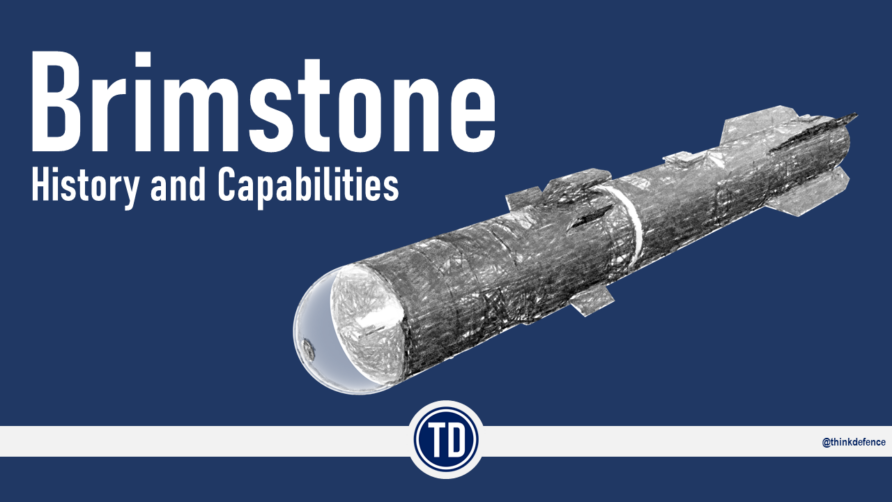
Excellent article as ever sir!
Personally, I don't think Apache in any form is a "deep strike" platform, it is simply not survivable outside of a highly supported all arms context, so yes an RA system with good range fired from land vehicles and / or ships seems like a splendid idea. Similarly the RAF could argue the toss, but remind me how many Typhoons we have in service, and what their priority roles are (air defence and delivering Storm Shadow spring to mind), so again, I would discount that argument.
Does land precision strike need a minimum range requirement that overlaps with the maximum range of the close support overwatch requirement (Ground Launched Brimstone)? In which case it replaces Exactor in service, and produces a saving there?
G-SMart seems like a no brainer for sure, the development being already underway, and it adds another type of rocket to the M270's arsenal – I think we are going to need more launchers, but that is a different topic. On the subject of M270 payloads – a question for your good self and any other commentators – how on earth does a tiny little UAS like Outrider establish a good secure comms link from 80km+ away over the battlefield? What I dont get about that concept of a GMLRS delivered Outrider UAS is how we get a good link. Would we need a tethered UAS up at 120m or higher to get a clear line of site to an Outrider operating at the same or lower altitude?
I am absolutely with you on maximizing the investment already made in our considerable parts bin, and would take an "SPEAR everywhere" approach. So I don't care if its launched by a M30 rocket like the SDB, or if its VL'd on top of a CAMM-ER booster, just build em! In considerable numbers please….. although the VL version would also certainly provide the RN T31 with an additional capability.
GL Brimstone, GL SPEAR, G-SMart and maybe MRLS delivered Outrider, and Bob's yer proverbial uncle, add that new 155 and the Royal Artillery can be back to being the gods of war, rather than the red haired step children……
Having more than one tool in the box for any particular task would certainly complicate matters for anyone trying to defend against them.
Considering virtually nothing MOTS fits in the F35B weapons bay & SPEAR has a light warhead it would be interesting to see if LPS could potentially find a solution to that conundrum? If so the RAF could be more supportive of any proposal?
Hi TD, I was wondering if you were planning on updating this article based on the new information on the MBDA offering.
At Farnborough 2024 and in the banner for the Complex Weapons Partnership can be seen a new missile, clearly a LPS concept, also being fired fom M270 in a model at their stand.
I haven't been able to find out much else about it but the thinking seems to have moved on since the article was written.
I am, going to try and keep all the complex weapons posts updated as things change, all down to available time though!